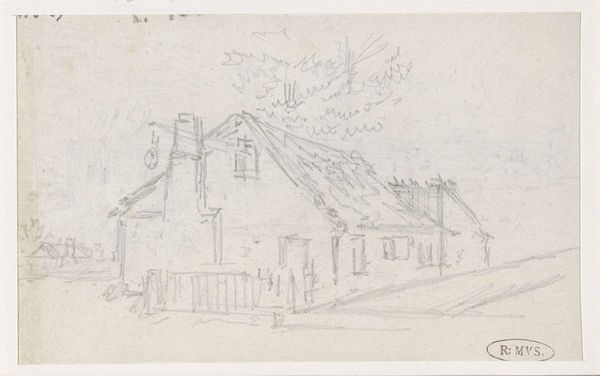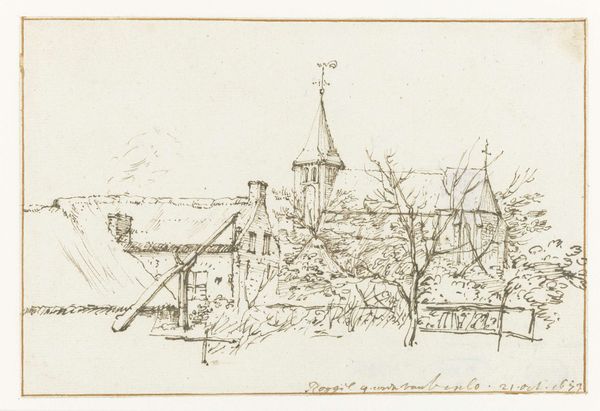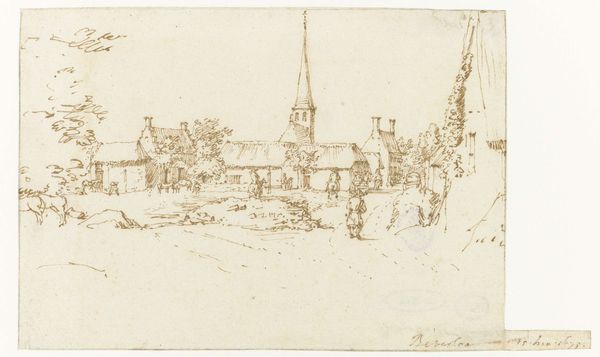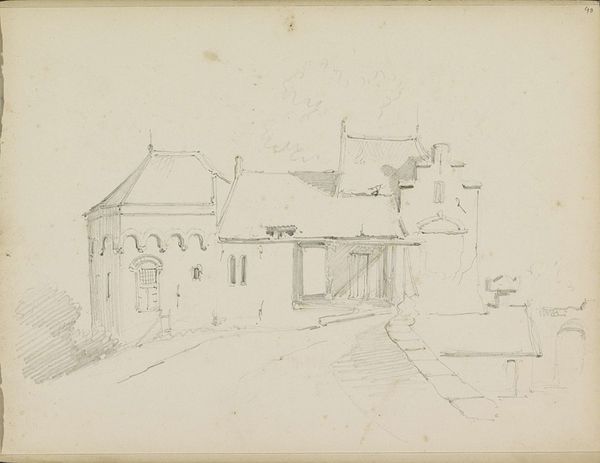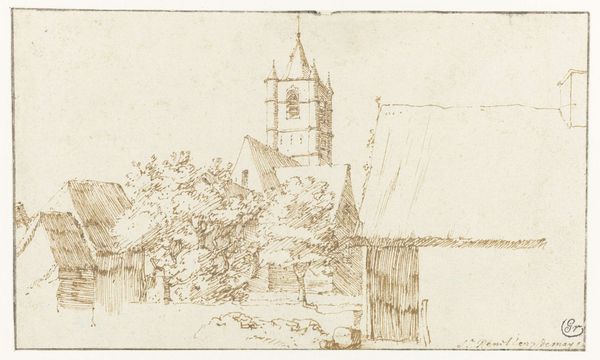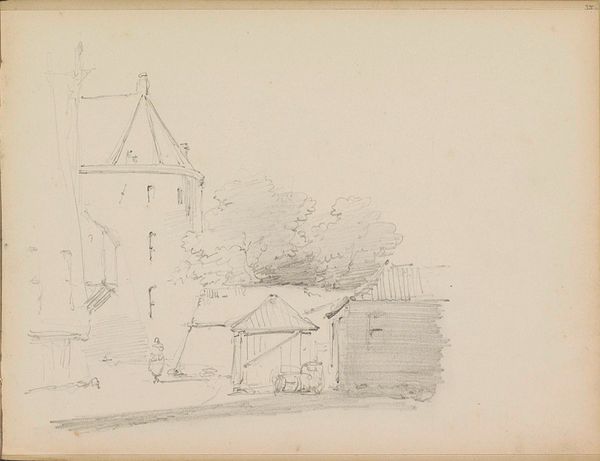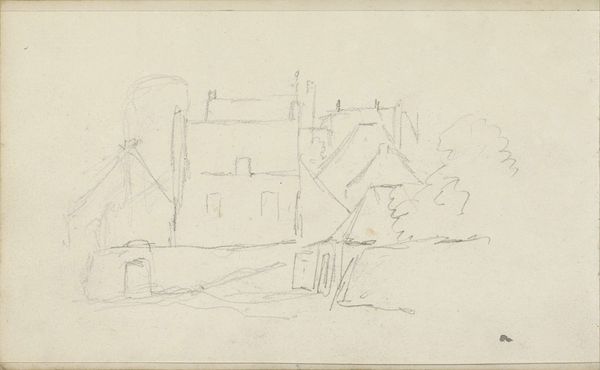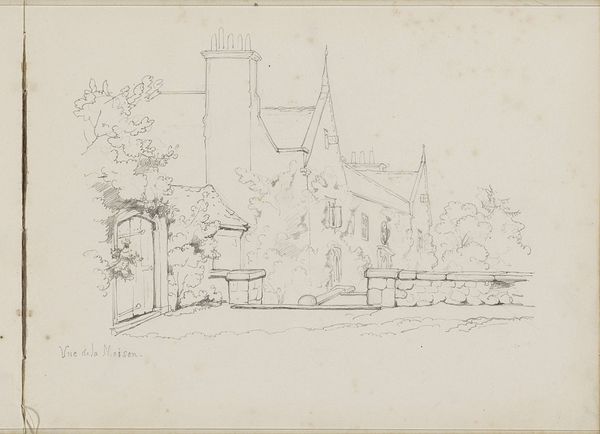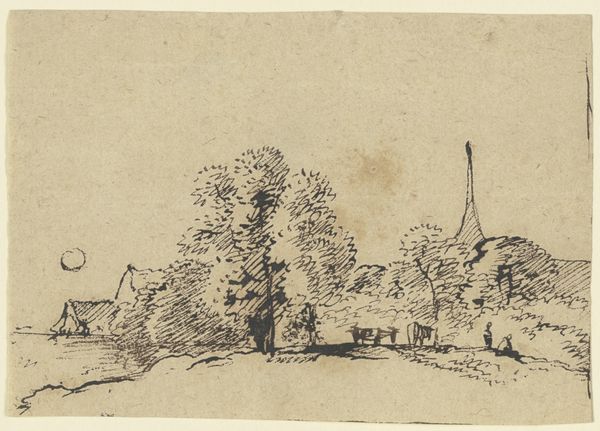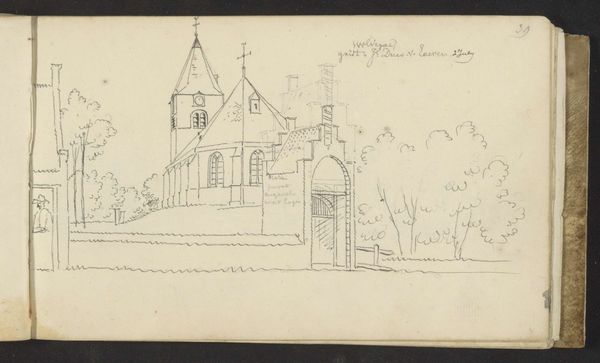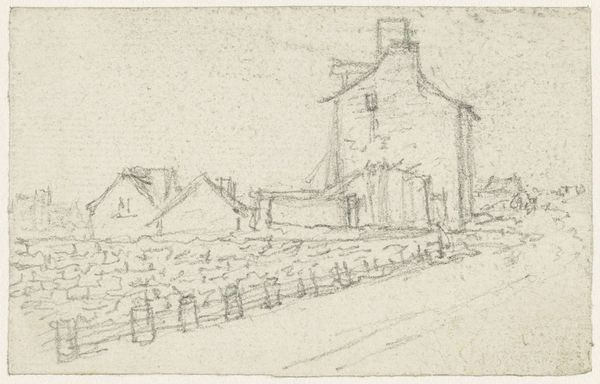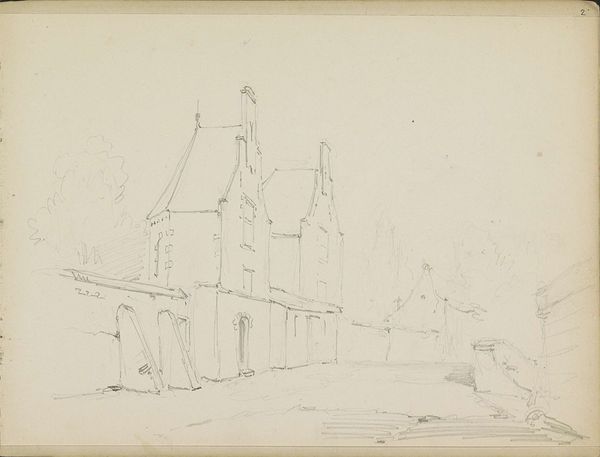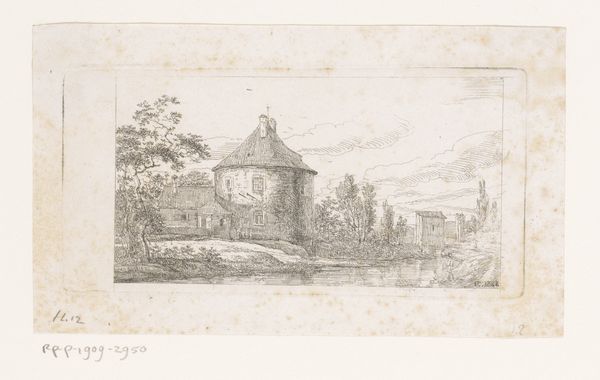
drawing, ink, pencil, pen
#
drawing
#
dutch-golden-age
#
pen sketch
#
landscape
#
etching
#
ink
#
pencil
#
sketchbook drawing
#
pen
#
cityscape
Dimensions: height 90 mm, width 158 mm
Copyright: Rijks Museum: Open Domain
Curator: At first glance, the composition, rendered in brown ink, presents a rather simple yet intriguing arrangement of architectural forms amidst the foliage. Editor: It's certainly evocative. There's a melancholy air, a sense of quiet observation about it. This is "Gezicht op een kapel en een kerkhof," or "View of a Chapel and Cemetery," a drawing attributed to Constantijn Huygens II, created sometime between 1675 and 1677. Curator: The work demonstrates a controlled hand and thoughtful execution, even if appearing as a quick notation. Notice the precision in capturing the chapel's structure versus the loose, almost gestural depiction of the trees. There’s an appealing contrast. Editor: Indeed. Huygens occupied an interesting position in Dutch society, serving as secretary to various Stadtholders. These quick landscape drawings document his surroundings, capturing fragments of daily life with cultural, social, and, of course, political implications. The presence of both the church and cemetery, within a single vista, prompts consideration of social institutions' influence and spiritual beliefs during this era. Curator: One might view this as a memento mori rendered not with the somber trappings we usually associate with it. Huygens uses simple lines and the spatial relation of building to nature, implicitly raising issues of faith, landscape, and mortality. The technique employed - a sort of understated picturesque - quietly moves the viewer. Editor: These works show the prevailing Dutch sensibility—drawing, as an important part of recording the world for civic and personal observation. This vista of town, church and graveyard would speak to the place of family, civic order, and personal piety that framed his time and culture. It invites us to think on this piece in the context of its time and, even more, of our own. Curator: The image reveals the quiet profundity obtainable through simplicity, proving that artfulness often inheres not in complexity but in careful observation, even humble tools of depiction. Editor: Ultimately, through this modest drawing, Huygens presents not just a physical location but a mirror reflecting a set of shared beliefs that structured daily life, allowing later generations, like us, an invitation to see history anew through his perspective.
Comments
No comments
Be the first to comment and join the conversation on the ultimate creative platform.
